Eight Cookbooks Worth Reading Cover to Cover
Flag dishes you want to make, or don’t: The point of this practice is pleasure, not pragmatism.
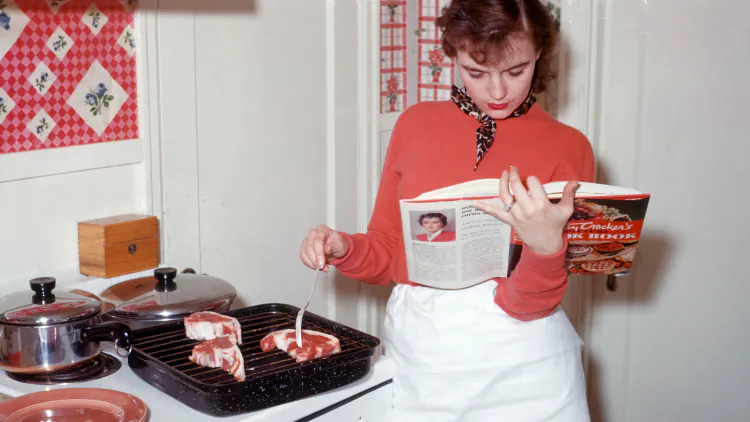
A certain type of person will tell you that they read cookbooks like they do novels. This usually means they flip through them at night, in bed, perhaps with the help of some gentle, warm light and a hot cup of tea. They pore over the notes and instructions that precede each recipe; they dream up menus the way a fiction reader might picture the furniture inside a character’s home. They might flag dishes they want to cook, or they might not. The point of this practice is pleasure, not pragmatism.
Of course, there are some cookbooks that lend themselves particularly well to this exercise, and with the right title, any of us can fall into late-night reveries over bouillabaisse or dumplings. These are not quick-and-dirty weeknight cookbooks, nor are they written to bend to a trend, as with the keto and air-fryer manuals that seem to proliferate like weeds these days. For a cookbook to be a great read, it should be written with a living, breathing (and often busy) home cook in mind, and also elevate and expand the genre. The eight books below are titles you should, and will want to, read front to back. Each is written with care and enthusiasm, not just for the practice of cooking but for the experience of eating.
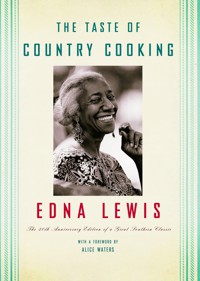
The Taste of Country Cooking, by Edna Lewis
Lewis’s exemplary Southern cookbook is interspersed with essays on growing up in a farming community in Virginia; many of the recipes in the book unspool from these memories. Lewis, who worked as a chef in New York City as well as in North and South Carolina, writes with great sensual and emotional detail about growing up close to the land. Of springtime, she writes, “The quiet beauty in rebirth there was so enchanting it caused us to stand still in silence and absorb all we heard and saw. The palest liverwort, the elegant pink lady’s-slipper displayed against the velvety green path of moss leading endlessly through the woods.” Her book was ahead of its time in so many ways: It is a farm-to-table manifesto, a food memoir published decades before Ruth Reichl popularized the form, and an early, refined version of the cookbook-with-essays we’re now seeing from contemporary authors such as Eric Kim and Reem Assil. The recipes—ham biscuits, new cabbage with scallions, potted stuffed squab—are as alluring as the prose.
[Read: A 600-year history of cookbooks as status symbols]
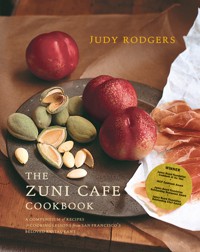
The Zuni Cafe Cookbook, by Judy Rodgers
This book of recipes from Zuni Café, a beloved San Francisco farm-to-table establishment, is far more accessible and enjoyable than most other restaurant cookbooks. It’s a hefty book and dense with recipes, but Rodgers’s writing—in her headnotes and introductions—is as inviting as the pleasingly early-aughts food photography, which highlights the techniques and ambiance of the café and transmutes them to the home setting. Rodgers, who died in 2013, was a pedigreed chef with a home cook’s sensibility, and that comes through in these pages: You trust her implicitly and want to hang around in her kitchen, eating seasonal, comfortingly traditional food with French and Italian flair, such as spicy broccoli-and-cauliflower pasta, or Rodgers’s famous roast chicken with bread salad.
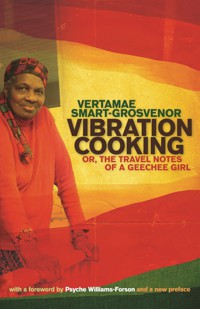
Vibration Cooking, by Vertamae Smart-Grosvenor
Smart-Grosvenor writes as if she is at the stove, speaking to you over her shoulder while she stirs a pot, adding this and that. She is not one for measurements; instead, she cooks “by vibration,” focusing less on strict recipes than on sensory input, muscle memory, and desire. How you cook is a personal decision, Smart-Grosvenor insists: “The amount of salt and pepper you want to use is your business.” Vibration Cooking is part coming-of-age story—she grew up in South Carolina, hopped on a ship for Paris when she was 19, and eventually settled in New York City—and part argument for trusting your own tastes. Her tone is conversational and full of verve: “I would always feed the painters and the musicians and the drunks and anybody that really was hungry. The work was hard but I really dug that brief chapter in my life.” Her recipes contain little detail—many of them span no more than a paragraph or two—but Smart-Grosvener’s confidence is contagious. You’ll find that all you need to make coconut custard pie or Obedella’s Barbecued Spareribs is your own intuition.
[Read: When did following recipes become a personal failure?]
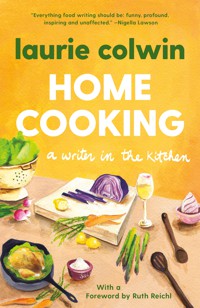
Home Cooking, by Laurie Colwin
If you’ve ever wished you had a bigger, better-outfitted kitchen, Colwin’s Home Cooking will rightfully convince you that ample space is not necessary for making good, satisfying food, even for guests. Home Cooking is more of a memoir in essays than a cookbook, but it’s also a proclamation from Colwin, a novelist who made her meals on a hot plate in a closet-size New York apartment for years. She writes in unsentimental, plucky, joyful prose on how to bake bread “without agony,” host a dinner party with minimal space, or avoid grilling: “I have avoided grilling by broiling, and I have never had to bother myself about getting in a supply of mesquite or apple wood, or old thyme twigs.” The book is studded with occasional recipes—yam cakes with fermented black beans, “chicken with chicken glaze”—the way a pilaf may be studded with fat golden raisins: little treasures to pull from the bounty Colwin has set for us.
An Everlasting Meal, by Tamar Adler
The first chapter of An Everlasting Meal, Adler’s ode to “cooking with economy and grace,” is titled “How to Boil Water.” This may sound like the most bare-bones cooking instruction possible, but it’s the former Harper’s editor’s celebration of boiling and poaching as underappreciated cooking methods, and of water as an invaluable ingredient. Adler is able to find inspiration and culinary value in the tiniest kitchen scrap and the humblest preparation, and she can make you look at a simple pot of water with fresh, eager eyes. The chapters include essays and a few recipes to back them up. “How to Stride Ahead” outlines Adler’s strategy for buying and cooking vegetables each week: blitzing broccoli stems into pesto, turning boiled vegetables into salad, tossing the straggling scraps into a curry over the weekend. Her approach balances pragmatism with sensualism: On the weekly leafy-greens purchase, Adler writes, “This will seem very pious. Once greens are cooked as they should be, though: hot and lustily, with garlic, in a good amount of olive oil, they lose their moral urgency and become one of the most likable ingredients in your kitchen.”
Salt, Fat, Acid, Heat, by Samin Nosrat
Nosrat, who once worked as a cook at the Bay Area stalwart Chez Panisse, explicitly designed this book to be read cover to cover: The first recipe doesn’t arrive until the reader is a few hundred pages in. Salt, Fat, Acid, Heat takes on the enormous task of teaching the basic, deep knowledge that cooking requires. For Nosrat, that comes down to mastering those four titular elements that balance out a meal. Aided by playful illustrations from Wendy MacNaughton, she outlines the roles that each of these aspects play—the way that a correct measure of salt will make a vegetable taste more like itself, or how a lashing of lemon juice can make a bowl of soup sing. Nosrat’s tone is warm, authoritative, and encouraging, preempting any and every question you’ve ever had about cooking.
My Bombay Kitchen, by Niloufer Ichaporia King
My Bombay Kitchen is a perfect example of a cookbook that can simultaneously transport you to another place and offer a deep lesson on food culture, tied up with the comforting pleasures of elegant prose and well-written recipes. King’s family is Parsi, an ethnoreligious group that fled modern-day Iran for the Indian subcontinent more than 1,000 years ago. In My Bombay Kitchen, she shares recollections of her childhood home and the daily staples and holiday feasts that came out of it—beautiful images such as the ghee vendors that walked the streets with vats of liquid gold made from buffalo milk. (King also wants you to make your own: “It’s not much bother, you don’t have to buy more than you can use, and your house will smell heavenly.”) Reading the book frequently feels like visiting a new city on the coattails of a local, learning its tastes and smells and rhythms from an expert. My Bombay Kitchen was also the first American Parsi cookbook written by a Parsi, and it stands as an invaluable piece of art that doubles as an effort toward cultural preservation.
[Read: Writing an Iranian cookbook in an age of anxiety]
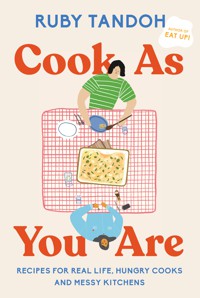
Cook as You Are, by Ruby Tandoh
Often, we home cooks need permission to be imperfect, impatient creatures—ones unwilling to stir a soup for hours or bake our bread from scratch. Enter Tandoh’s Cook as You Are, a declaration of purpose for those who love good eating but aren’t always willing—or able—to go the full nine Martha Stewart–esque yards. Tandoh, a onetime contestant on The Great British Bake Off, is unfailingly pragmatic and unconcerned with pretense, both as a cook and as a writer. Cook as You Are is designed to be accessible, in a wide range of that word’s definitions. Chapters are divided by need and craving, not by dish style: quick dinners, meals with low effort and high reward, dishes to make when you want to linger over the stove. What makes the book such a joy is Tandoh’s gentle, permissive style; she includes an essay on why, sometimes, you need to make a grilled cheese for dinner. “Although it’s my role as a cookbook writer to help you find your way in the kitchen, I also want to make clear that this isn’t something you necessarily need to do all the time,” she writes. “For ordinary days and ordinary moods, sometimes grilled cheese will do.”
What's Your Reaction?




















